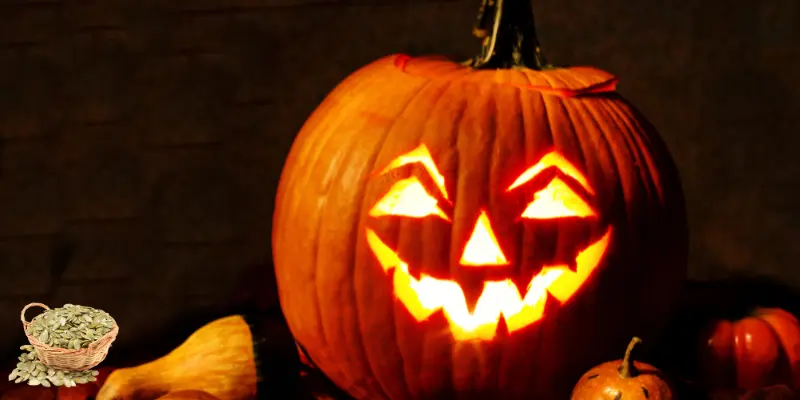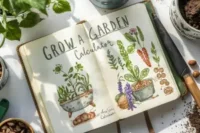The Surprising Journey of Pumpkin Seeds: From Ancient Fields to Modern Snacks
Published: 17 Sep 2025
Hey history lovers!
When did something as small as a seed begin shaping history? Long before we started eating pumpkin seeds in salads or as snacks, ancient Mesoamerican people held them in high regard. They used them in ceremonies, for healing, and as a vital source of food. The history of pumpkin seeds stretches across continents and centuries, quietly nourishing generations.
I’m Sheila, a botanist with seven years of experience and a love for seeds that grow stories. This article will explore the history of pumpkin seeds, from their ancient origins to their presence in modern kitchens, and from their use in traditional medicine to their role in heirloom gardening.

By the end, you’ll gain seed-to-snack knowledge, historical nuggets, and fresh reasons to appreciate this crunchy superfood. Ready to crack open this crunchy legacy? Let’s begin.
The History of Pumpkin Seeds
Pumpkin seeds are small, but they have a long and fascinating history. Like tiny time capsules, they’ve traveled across centuries and civilizations, carrying traditions, nutrition, and healing with them.
As a botanist and gardener, I’ve always found it fascinating how one humble seed can bridge cultures and kitchens alike.
Ancient Beginnings: Pumpkin Seeds in Mesoamerican Civilizations
Archaeological digs in Mexico show people were using pumpkin seeds as far back as 7,000–5,500 BCE. The Aztecs and Mayans didn’t just eat pumpkins; they harvested the seeds for food, natural remedies, and even spiritual rituals.
Seeds were often offered to the gods as part of sacred ceremonies. They weren’t just crops, they were treasures.
Seeds on the Move: Global Spread through Trade and Exploration
As Spanish explorers landed in the Americas, they brought pumpkin seeds back to Europe, where they gained popularity quickly.
From there, they journeyed across continents, landing in Indian kitchens, Chinese herbal shops, and Middle Eastern spice markets.
In my travels, I’ve seen how each culture gave these seeds a unique twist, from roasted snacks to soothing remedies. Native American communities continued to roast and share them, passing down flavour and knowledge.
Back to the Garden: The Heritage and Heirloom Varieties
In colonial America, seed-saving became a vital tradition; families carefully preserved pumpkin seeds year after year.
Some heirlooms, such as the Austrian Styrian pumpkin, continue to grow in gardens today.
As a backyard gardener, I’ve found heirloom varieties especially rich in flavour and nutrition. There’s something deeply satisfying about planting a seed with history, like opening a storybook in the soil.
Nutritional Wisdom Through the Ages
Like a well-travelled herb in a spice rack, pumpkin seeds have found their way into various healing practices and diets worldwide. Their value wasn’t just in taste but in the quiet strength they offered through nutrition and wellness. Over the years, I’ve appreciated how this simple seed carries centuries of knowledge in every bite.
🥗 Traditional Medicinal Uses Across Cultures
Before supplements came in bottles, pumpkin seeds served as nature’s remedy.
In folk medicine, pumpkin seeds were used to ease urinary issues and even fight parasites.
Traditional systems, such as Ayurveda and Chinese medicine, have included pumpkin seeds in treatments for inflammation and digestive issues. These weren’t just kitchen ingredients; they were part of the healer’s toolkit.
Superfood Revival: Rediscovery in Modern Diets
Today, pumpkin seeds are making a powerful comeback as a beloved superfood.
Pumpkins are packed with magnesium, zinc, protein, and plant-based omega-3 nutrients that many of us miss in our daily diets.
Whether you’re following a plant-based, keto, or paleo lifestyle, these seeds fit right in. I enjoy adding pumpkin seed oil to my salads. Its rich, nutty flavour reminds me that ancient wisdom often tastes great.
How We Eat Pumpkin Seeds Through Time
Pumpkin seeds have always found their way to the table, whether by fire, stone, or spoon. Like old family recipes passed down through generations, the ways we prepare and enjoy these seeds have changed yet stayed beautifully rooted in tradition.
I find it comforting to know I’m roasting seeds much like our ancestors once did, only now, I pair them with smoothie bowls!
Roasted, Ground, or Raw: Ancient Prep Methods
- Ancient Mesoamerican and Native American communities roasted pumpkin seeds over open fires, a simple, smoky, and delicious process.
- Some ground them into pastes or sauces, such as mole, adding richness and protein to traditional stews. These early cooks knew how to bring out the best in seeds long before modern spice racks and blenders came along.
Today’s Culinary Comeback
Today, pumpkin seeds (often called pepitas) are sprinkled into everything from power bowls to smoothies and even creamy seed butter.
Parents love tossing them into track mixes for lunchboxes, while home cooks use them for crunchy seed crusts or gluten-free baking.
I often toast mine with cinnamon and a pinch of sea salt, it’s like giving a historic snack a trendy twist!
Why Pumpkin Seeds Still Matter Today
Pumpkin seeds may be small but mighty in purpose, flavour, and impact. Here’s why they continue to earn a spot in gardens, lunch boxes, and modern kitchens:
Eco-Friendly and Zero-Waste
- Every part of the pumpkin can be used—flesh, skin, and seeds.
- Seeds can be roasted, composted, or saved for planting.
- Ideal for sustainable living and low-waste cooking habits.
Perfect for Home Gardens and School Projects
- Easy to grow in backyard gardens, containers, or school plots.
- It is a great teaching tool for kids to learn about seed saving and plant life cycles.
- Quick germination and visible growth make them beginner-friendly.
Nutrient-Packed and Versatile
- High in magnesium, zinc, protein, and plant-based omega-3s.
- It is an excellent addition to vegetarian, paleo, and keto diets.
- It can be eaten raw, roasted, ground into flour, or made into butter.
Loved by All Ages and Taste Buds
- Choosy eaters enjoy them lightly salted or sweetened.
- Chefs use them for crunchy toppings, seed crusts, and as a base for sauces.
- Easily adaptable to snacks, granola, salads, and even desserts.
A Seed with a Story
- Tied to ancient traditions and healing practices.
- Encourages mindful eating and connection to food origins.
- As a botanist and home gardener, I love teaching kids how one small seed can tell a big story from soil to snack!
Supports Pollinators and Soil Health
- Pumpkin plants support bees and other beneficial insects.
- Growing your own helps reduce reliance on store-bought, pesticide-heavy produce.
| Fun Trivia About Pumpkin Seeds |
|---|
|
Conclusion: Seeds of the Past, Snacks of the Future
When we look at the history of pumpkin seeds, we see more than just a food trend; we see centuries of science-backed nourishment. These seeds provided magnesium, zinc, and omega-3 fatty acids to ancient health systems before the advent of modern medicine.
I’ve seen firsthand how pumpkin seeds can thrive in home gardens and offer real nutritional value in everyday diets. They’re easy to grow, simple to prepare, and genuinely good for you.
Ready to try a superfood with roots as deep as its benefits? Add pumpkin seeds to your next smoothie, salad, or seed mix for a nutritious addition. Your body and the soil will thank you.
Frequently Asked Questions
Are you curious about pumpkin seeds beyond their taste and nutritional value? Here are some of the most common questions readers (just like you!) often ask after diving into their fascinating story.
Pumpkin seeds date back to ancient Mesoamerica, around 7,000–5,500 BCE. Civilizations like the Aztecs and Mayans grew pumpkins primarily for their seeds. They used them for food, medicine, and even spiritual ceremonies.
Pumpkin seeds were roasted for eating, ground into sauces like mole, and even used in healing remedies. Many cultures believed that they helped with digestion and ward off parasites. They also appeared in rituals and offerings to deities.
Yes and no! Pepitas are the green, shell-free seeds in some pumpkin varieties, especially Styrian pumpkins. Regular pumpkin seeds typically have a white shell and require roasting or peeling before consumption.
Spanish explorers brought pumpkins and their seeds to Europe in the 16th century. They travelled to Asia, Africa, and the Middle East. Each region adapted them into traditional dishes and medicines.
Definitely! especially when they’re roasted with cinnamon or sea salt! Kids enjoy cracking the shells, and their mild flavour makes them easy to sneak into snacks or trail mix. Plus, they’re fun to grow and harvest.
Yes! Some varieties, such as Styrian pumpkins, produce seeds with hulls that are known as pepitas. Others have seeds with tough outer shells, but both types are edible and nutritious.
Pumpkin seeds are eco-friendly, nutritious, and super versatile. They fit into modern lifestyles, from keto snacks to school garden projects. They remind us that good things can still come in small, sustainable packages.
| Reference Sources |
|---|

- Be Respectful
- Stay Relevant
- Stay Positive
- True Feedback
- Encourage Discussion
- Avoid Spamming
- No Fake News
- Don't Copy-Paste
- No Personal Attacks

- Be Respectful
- Stay Relevant
- Stay Positive
- True Feedback
- Encourage Discussion
- Avoid Spamming
- No Fake News
- Don't Copy-Paste
- No Personal Attacks





